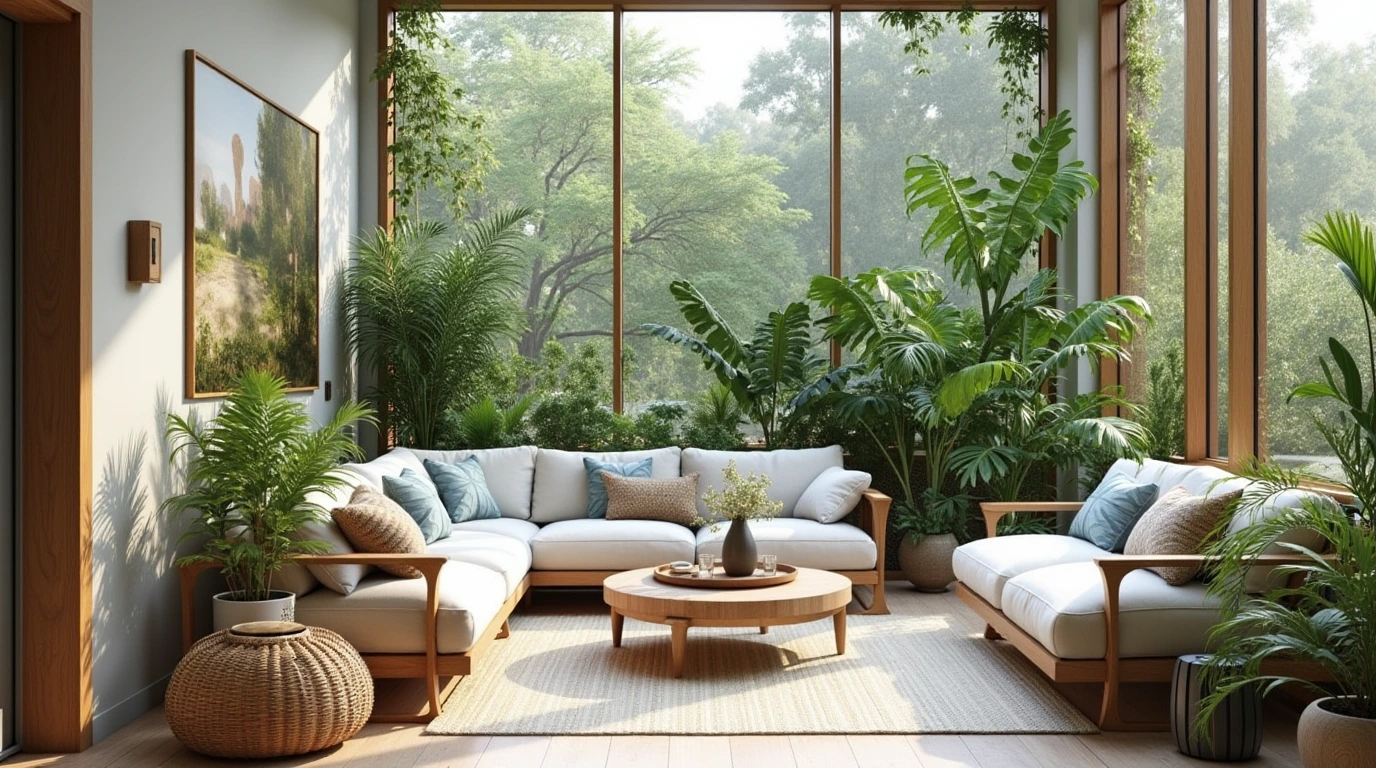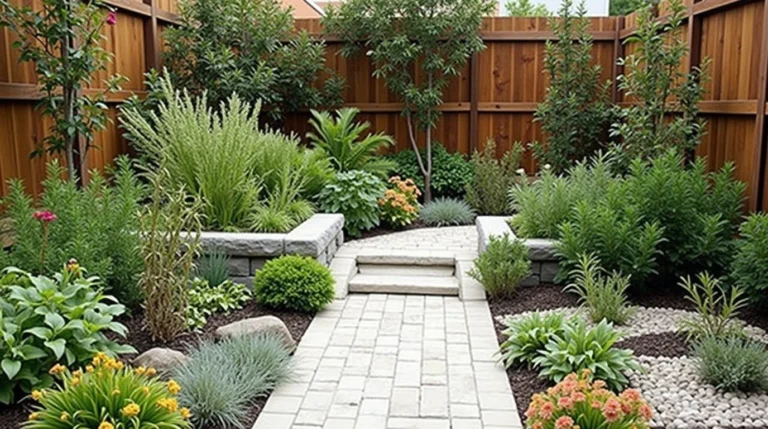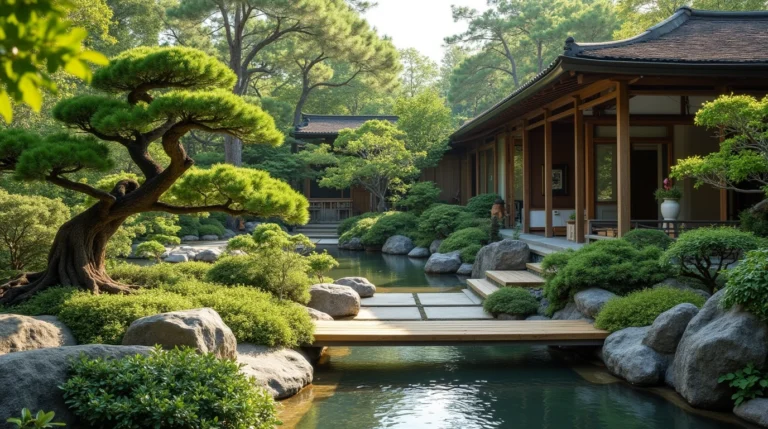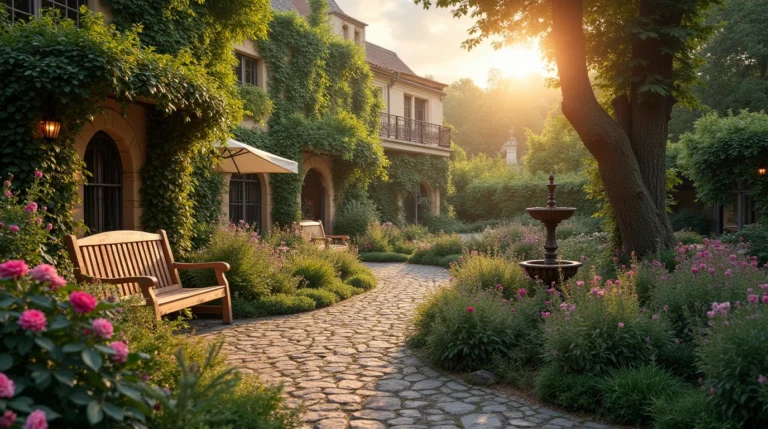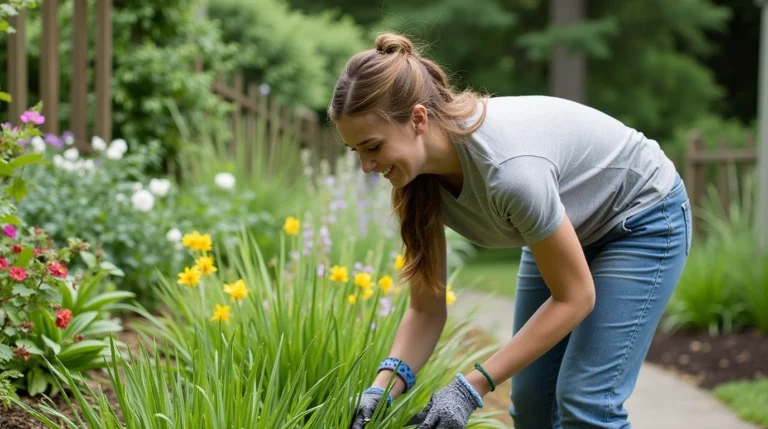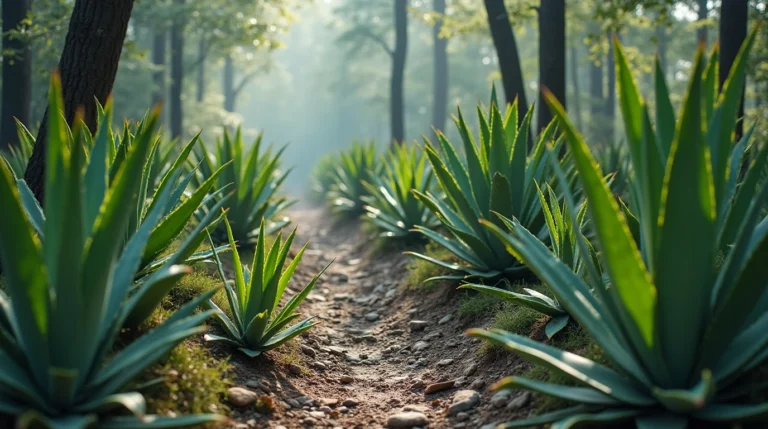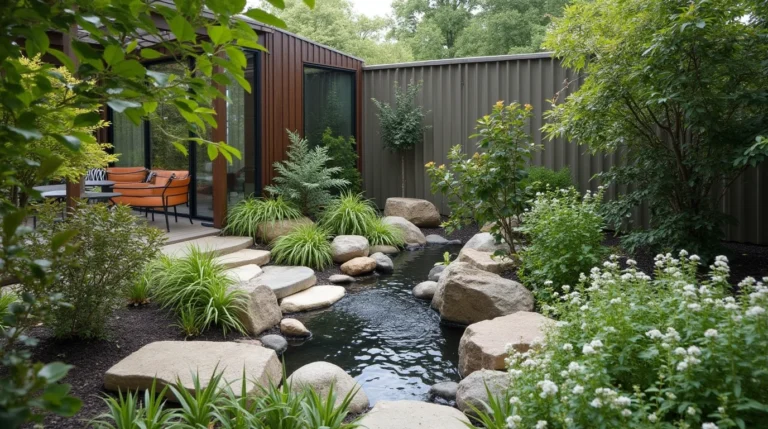How to Create a Beautiful Indoor Garden in Small Space: 10 Best Tips for Greenery at Home
Table of Contents
Creating an indoor garden in a small space can seem like a challenge, but with the right tips, you can easily turn even the smallest apartment or home into a lush, green oasis. Explore these 10 best tips to transform your limited space into a vibrant indoor garden.
Indoor gardens have become increasingly popular, especially for those living in smaller spaces. Whether you’re in a cozy apartment or have limited floor space, you can still create a beautiful indoor garden. The idea of having lush greenery indoors brings peace, freshness, and a touch of nature, even in the most confined spaces.
If you think that a small space limits your gardening dreams, think again. With some thoughtful planning, creative ideas, and a little effort, you can turn any corner of your home into a thriving indoor garden. From space-saving techniques to selecting the right plants, these 10 best tips will help you create an inviting, green sanctuary inside your home.
Let’s dive into the key tips on how to build a stunning indoor garden in your small space!
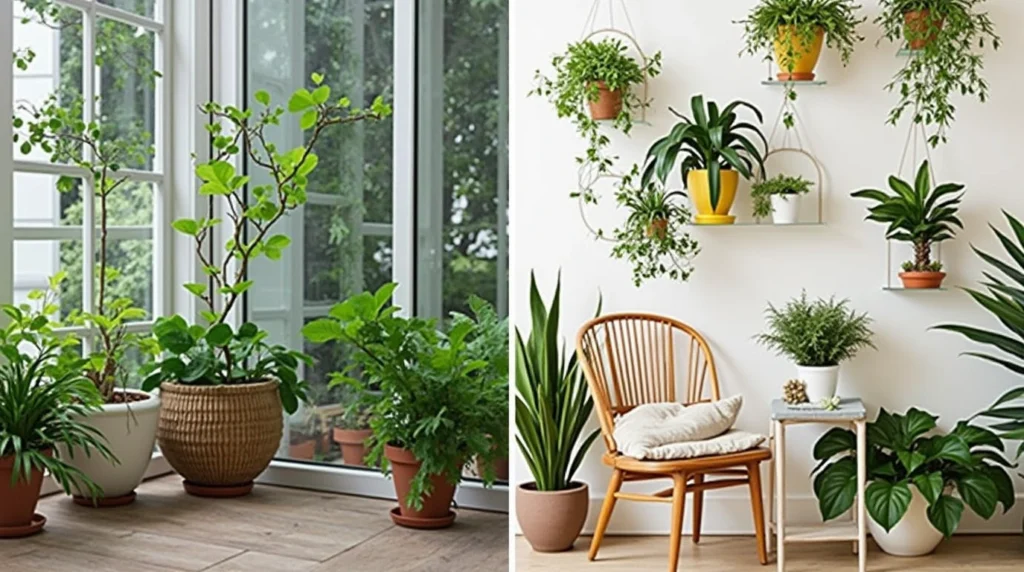
1. Start with the Right Plants for Small Spaces
Choosing the right plants is essential when designing an indoor garden in a small space. Some plants naturally thrive in confined areas, while others need more room to grow. Start by picking indoor garden plants that can adapt to smaller environments and require minimal space.
Plants like succulents, snake plants, ZZ plants, pothos, and ferns are perfect choices for limited spaces. These plants don’t require large containers or much attention, making them ideal for beginners and those with busy schedules. Moreover, they tolerate low-light conditions, making them perfect for apartments or homes with minimal natural light.
For larger indoor gardens, consider plants like peace lilies, spider plants, and rubber plants. These plants grow tall and narrow, so they won’t take up too much floor space but will still provide beautiful greenery.
2. Use Vertical Space for More Greenery
One of the best small space garden ideas is using vertical space. If you’re limited on floor space, think up! Adding shelves, wall-mounted planters, and hanging baskets allows you to create a multi-layered garden. You can line your walls with a variety of plants, from trailing vines like pothos or ivy to small potted plants like succulents.
Vertical gardens are perfect for small spaces because they don’t take up much room on the ground. You can even hang plants in decorative planters, like macrame hangers, to add a bohemian touch to your home decor.
If you have a particularly sunny wall, consider creating a living wall. This innovative design allows you to install rows of plants along the wall for a striking visual display of greenery. It’s not only space-efficient but also gives your room a modern, fresh look.
3. Incorporate Multi-functional Furniture with Built-in Gardens
For those living in very tight quarters, every piece of furniture must serve multiple functions. Consider incorporating furniture with built-in planters or indoor gardens. For example, look for coffee tables with hidden plant containers or bookshelves designed to hold small potted plants.
Multi-functional furniture serves two purposes: maximizing space and integrating greenery into your home. You can place plants on top of a side table, or find a chair or ottoman that doubles as a planter. This keeps your home organized while adding a unique touch of nature.
When selecting multi-functional furniture, choose items that match the aesthetic of your indoor garden. For instance, a sleek, minimalist table with a modern geometric design will pair beautifully with simple, low-maintenance plants like succulents.

4. Opt for Smaller Containers and Pots
Another essential tip for creating an indoor garden in a small space is to choose smaller containers. Oversized pots can overwhelm your space and make it feel even smaller. Instead, go for smaller pots and containers that allow you to display more plants without overcrowding your home.
Smaller containers also make it easier to move your plants around, allowing you to adjust them for optimal sunlight exposure. Mix and match pots in various styles and colors to add texture and dimension to your garden. Ceramic, metal, and concrete planters all offer a unique look, depending on your aesthetic preferences.
Additionally, be sure to select pots with proper drainage to ensure your plants don’t sit in stagnant water, which can cause root rot.
5. Go for Low-Maintenance Plants
When you’re working with limited space, it’s essential to choose plants that are easy to care for. Some plants require constant attention, but for those with busy schedules or limited gardening experience, low-maintenance plants are a blessing.
Plants like the ZZ plant, snake plant, and succulents are perfect for a low-maintenance indoor garden. These plants require little watering and can thrive with minimal sunlight. Furthermore, they grow slowly, meaning they won’t quickly outgrow their containers and overcrowd your space.
If you’re looking for a plant that adds vibrant color and texture, consider choosing indoor plants with variegated foliage, such as the spider plant or English ivy. These plants require even less attention and can grow in most environments.
6. Play with Colors and Textures
An indoor garden isn’t just about the plants themselves; it’s also about how you display them. Mixing colors and textures adds interest and dimension to your indoor plant decor. By combining different leaf shapes, colors, and textures, you can create a dynamic and lively display.
Use decorative containers in various shades to contrast the deep green of the plants. For example, place vibrant yellow planters next to dark green plants, or opt for pastel-colored containers to match a soft, calming aesthetic. You can also include plants with contrasting leaf shapes, such as the smooth leaves of the snake plant next to the rounded, soft leaves of the pothos.
Textural variety is another way to bring more character into your garden. Experiment with wicker baskets, concrete pots, or modern metallic planters to create a visual balance in your indoor garden.
7. Create Indoor Garden Zones
If your small space has multiple rooms or areas, divide your indoor garden into different zones. Each zone can be tailored to suit the specific lighting and space needs of the plants.
For example, the kitchen could be home to a small herb garden, while the living room features larger plants like rubber plants or fiddle-leaf figs. A sunny windowsill could be used to house your succulents, while trailing plants can be hung in baskets around the room. Creating indoor garden zones makes it easier to care for your plants and ensures that each one has the proper conditions to thrive.
This approach also helps you avoid overcrowding and gives the impression of a spacious garden, even in a small area.
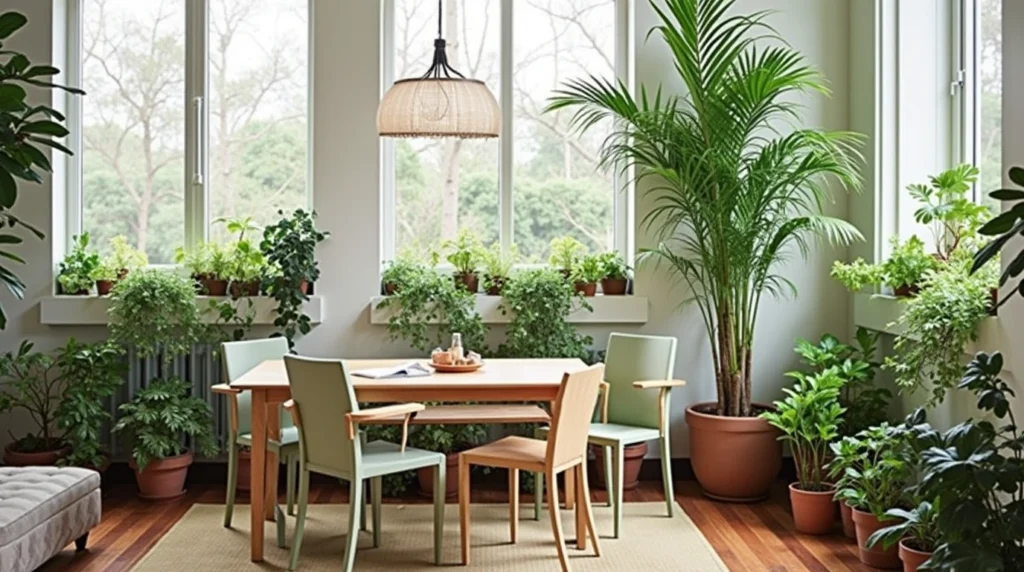
8. Utilize Windowsills and Balcony Spaces
Take advantage of natural light by using your windowsills or balcony for indoor gardening. Many indoor plants thrive in bright, indirect sunlight, making windowsills the perfect location. Small potted plants like basil, succulents, or herbs can all be placed on windowsills for a convenient, space-saving garden.
If you have a small balcony, transform it into a charming garden space. You can create a garden even in a small outdoor area by using compact planters, hanging baskets, and vertical garden structures. The plants will benefit from outdoor air circulation and sunlight, which is essential for their health.
If your balcony is in a shaded area, consider choosing plants that thrive in low-light conditions, such as ferns or hostas.
9. Include Indoor Water Features
For a unique and calming touch, consider adding a small indoor water feature to your garden. A tabletop fountain, a mini water garden, or a fish tank can enhance the beauty and tranquility of your indoor space. The sound of running water is soothing, and it can help create a peaceful atmosphere within your garden.
Water features are also beneficial for maintaining humidity in the air, which is essential for some plants, like ferns or tropical species. The added moisture can create a more suitable environment for your indoor garden, especially if you live in a dry climate.
10. Maintain Your Indoor Garden Regularly
Finally, regular maintenance is essential to keeping your indoor garden healthy. Be sure to water your plants according to their specific needs, check for pests, and prune dead leaves regularly. Indoor gardens are relatively low-maintenance compared to outdoor ones, but they still require care to remain vibrant.
Inspect each plant weekly to check for signs of overwatering, pests, or disease. Additionally, regularly clean the leaves with a damp cloth to remove dust and allow the plants to breathe properly.
Conclusion
Creating a beautiful indoor garden in a small space is easier than you might think. By selecting the right plants, using vertical space creatively, incorporating multi-functional furniture, and making thoughtful decor choices, you can cultivate a lush and vibrant indoor garden. Whether you’re working with a tiny apartment, a small home, or a limited living area, there are endless possibilities for turning any space into a flourishing green sanctuary.
With these 10 best tips, you’ll be able to enjoy the benefits of indoor gardening while keeping your space stylish and organized. From low-maintenance plants to creative container gardening, each of these tips will help you get the most out of your limited space.
Embrace the power of greenery and create your own beautiful indoor garden today!

